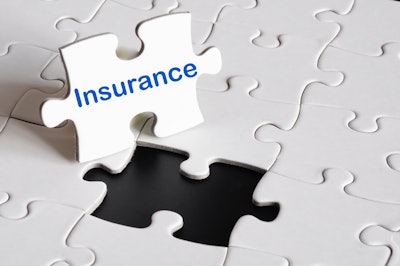
First, insurance is typically one of the largest budgeted expenses. Second, with most businesses, insurance expenses can be inflated, especially if loss performance is above average. Having insurance is non-negotiable, which leaves businesses victim to unreasonable insurance rates charged by insurance carriers. So, how do businesses lower their insurance expenses without leaving themselves exposed? The answer may be a group captive insurance strategy.
Let me start by giving a quick background on how an insurance company works. Almost 30 percent of your insurance premium goes towards paying fixed expenses the insurance carrier incurs (marketing and administrative costs). The remaining 70 percent of the premium is set aside in a loss fund to pay for losses. At the end of the policy period, the money left over in the loss fund is transitioned to retained earnings (profit) for the insurance company.
The insurance company ‘earns’ this profit by taking a calculated risk – paying insured losses. They have a predetermined capped amount of losses they incur before reinsurance kicks in (insurance for insurance companies). This way, they know what their worst-case scenario is.
This is where the group captive strategy comes in.
What is a group captive?
A group captive insurance strategy is a company or exclusive group of companies coming together to form their own insurance company. There are many reasons to form a group captive, but the main benefit is so the businesses can start earning underwriting profit instead of the insurance company. This is accomplished by the group captive taking on a layer of risk that is typically transferred to the insurance company. If you are an above-average performing company, you will now start to profit off your own performance.
Benefits of joining a group captive
- Underwriting profit. It is essentially betting on yourself. If you have good losses, you make a profit.
- Investment income. While 70 percent of your premium is sitting in the loss fund account, it is being invested. The investments are conservative, but nonetheless you are making an extra couple points on that money that goes back into your pocket.
- Lower insurance rates long term. Insurance rates are lower in the captive and continue to decrease over time. A large portion of your insurance rate is determined by the ‘group’ you are a part of. With your current insurance program, that group is comprised of similar sized businesses with the same insurance carrier. Therefore, if you are with ‘XYZ Insurance’ company, you are being rated based on the loss history of every similar sized business that has insurance with ‘XYZ Insurance’ company. Naturally, that means that high performing companies are subsidizing low performing companies. If you are a high performing company (above average loss history) then your rates will improve in a captive immediately. They will also continue to get better because you are now being rated off a different ‘group’ (the members of the exclusive group captive which are high performing, safety-conscious and like-minded companies).
- Insulated from the volatile insurance market cycle. The insurance market fluctuates between hard and soft markets. When markets are soft, your premiums seem more reasonable, but when markets are hard, your premiums experience an outrageous increase (much like current business auto premiums). In soft markets, insurance companies have made good profit margins, so underwriters are more liberal with the risks they write. This eventually catches up to them and their profit margin becomes extinct, which causes a hard market and the underwriters to become very conservative by charging high premiums to keep themselves afloat. This is an uncontrollable cycle, especially for the insureds. Once you are part of a group captive, your rates become steady and predictable, so you do not experience the volatile fluctuation that the rest of the market experiences.
- Best practices group. Business owners get the privilege of being part of a group of companies that are like-minded, dedicated to safety and improvement and are typically best in class. You get the benefit of learning from other companies, not just on safety and insurance but also on other aspects of your business (i.e how to avoid worker shortages and attract talent, new technologies, etc.). We have found this especially true within the landscaping industry.
- Specific coverage availability. Because you are part of an exclusive group, coverage can be tailored much more readily than the typical insurance marketplace. For example, coverage could be added to address an issue that has recently affected the industry (i.e. COVID-19).
- Policies function the same as your current policies. The way things are set up, no one will know you are a part of a group captive unless you tell them. Your policies will look the exact same and you will be able to use Certificates of Insurance the exact same way as your current program.
- You can keep your current agent. If you really love your current agent, you can keep them. They will still service your account as they do now.
Common objections
The biggest hesitation for most business owners in making the decision to join a group captive is the thought that they may experience a major financial burden if they or someone in the group captive has a large loss. This is a justified fear, but the way the group captive is formed assures each member will never have to pay more out of their pocket than their original premium for that year.
The group captive (and each individual member) will know going in what their worst-case financial scenario would be. When you first join the group captive, there is a small capital contribution (typically a small percentage of your first-year premium) that is set aside for that worst-case scenario situation. Therefore, if the worst-case scenario hits (which is statistically rare), all you would lose is that small capital contribution. Due to this capital contribution requirement, a group captive is looked at as a long-term insurance strategy, not something you jump in and out of. The financial benefit of a group captive strategy boils down to you risking a small percentage (3-5 percent) of your first-year premium for the potential reward of up to 65 percent of your premium returned. Members can also customize this risk vs. reward scenario to whatever suits their comfort.
Next, forming your own insurance company can sound like a hassle. This is nothing you as a member must worry about. The details and minor differences are handled by a captive program manager, allowing you to focus on your business.
The final objection of interested business owners typically is, “If this is so great, why haven’t I heard of it before or why hasn’t my current agent told me about this?”
First off, most of the insurance industry is not educated on group captive strategies. In most instances, it is not viewed as worth their time. Frankly, it is easier for them to write you a policy, collect their commission and see you next year. Another big reason that many businesses have not heard of this concept is because it may not be applicable to their current situation. Most group captives are created to only benefit a business that is paying more than $150,000 in combined insurance premiums. However, this is not the case with our exclusive Green Industry Group Captive.
The Green Industry Group Captive differs from the industry standard in numerous ways. If you are interested in learning more about what it would look like to join the national Green Industry Group Captive, email Will Allen or apply here.
EDITOR’S NOTE: Will Allen is a principal at Allen Insurance Group, located outside of Dallas, Texas, where he specializes in risk strategies for the green industry. He has developed specialized industry programs for his clients and is constantly looking for innovative ways to help his clients reduce their insurance expenses while strengthening their risk program.










